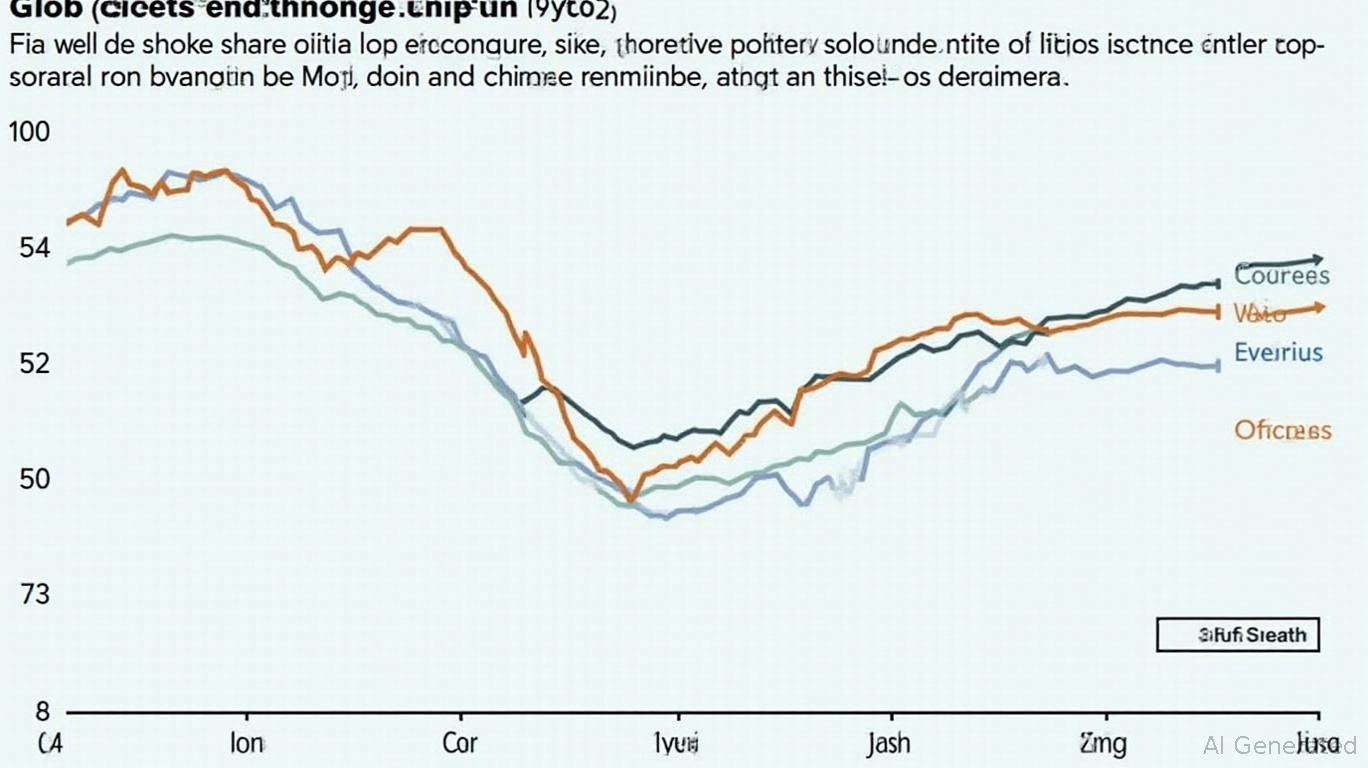The Dollar's Twilight: Navigating the Shift to a Multipolar Monetary Order
The U.S. dollar's reign as the world's dominant reserve currency is eroding, and the cracks in the post-Bretton Woods monetary order are widening. Over the past decade, the dollar's share of global foreign exchange reserves has fallen from 65.1% in 2015 to 57.8% by late 2024—a trend underscored by central banks' accelerating diversification into non-traditional assets. This decline, driven by fiscal disputes, unsustainable debt dynamics, and waning confidence in fiat currencies, signals an irreversible paradigm shift in global finance. For investors, the path forward demands a strategic reallocation to digital assets and hard assets to hedge against systemic instability.

The Dollar's Structural Weaknesses
The dollar's dominance has long relied on three pillars: the depth of U.S. financial markets, the dollar's role in global trade invoicing (54% of exports), and its status as the primary currency for international debt issuance. However, these advantages are fraying:
- Fiscal Disputes and Debt Overhang: The U.S. federal debt-to-GDP ratio has surged to over 120%, with political gridlock delaying credible fiscal reforms. Foreign investors, already net sellers of U.S. Treasuries since 2021, now face risks of dilution via inflation or defaults.
- Geopolitical Fragmentation: Sanctions regimes weaponizing the dollar (e.g., targeting Russia and Iran) have incentivized adversaries to bypass dollar-denominated systems, accelerating adoption of alternatives like the euro, yuan, and crypto networks.
- Erosion of Confidence: Central banks' diversification into gold (up 250% since 2005) and non-dollar reserves reflects skepticism about the dollar's long-term stability. Even the euro's stagnation at 20% of reserves highlights that no single currency can yet replace the dollar—but the system is moving toward a multipolar framework.
The Rise of Alternative Currencies and Assets
The dollar's decline is not a linear handover to one successor but a fracturing of reserve allocations into a mosaic of alternatives:
- Digital Assets:
- Stablecoins (e.g., USDC, Tether) are becoming intermediaries in cross-border payments, with $150B+ in circulation as of late 2024. Their low volatility and accessibility make them a hedge against fiat instability.
- Central Bank Digital Currencies (CBDCs): China's digital yuan and the EU's Digital Euro aim to bypass SWIFT, reducing reliance on dollar networks. Early adopters may see CBDCs as liquidity hedges by 2026.
Query: .
Hard Assets:
- Gold: Central banks added 1,000+ tons in 2023–2024, signaling gold's role as a non-sovereign, inflation-resistant store of value. Physical gold and ETFs (e.g., GLD) remain critical for portfolios.
- Energy Commodities: Geopolitical tensions (e.g., Middle East, Ukraine) and ESG-driven demand for renewables are pricing in volatility. Exposure to energy stocks (e.g., XLE) or ETFs like USO offers a hedge against supply shocks.
Navigating Deflationary/Inflationary Risks
The transition away from the dollar could trigger extremes:
- Inflation Risk: If dollar hegemony collapses abruptly, hyperinflation may result from a loss of anchor currency stability.
- Deflation Risk: Debt defaults and credit contraction could freeze liquidity, favoring hard assets with intrinsic value.
Investment Strategy: Diversify, Digitize, and De-dollarize
Investors must prepare for a world where no single currency dominates. Prioritize:
- Digital Assets:
- Allocations: 5–10% to stablecoins (USDC) and CBDC-related equities (e.g., blockchain infrastructure firms).
Risk: Regulatory uncertainty and volatility require gradual exposure.
Hard Assets:
- Gold: 5–15% in physical gold or GLD.
Energy: 5–10% in energy ETFs or commodity-linked equities.
Currency Diversification:
- Reduce exposure to dollar-denominated bonds; explore emerging market debt (e.g., China, Brazil) paired with currency hedging tools.
Conclusion: The New Monetary Order Demands Pragmatic Hedging
The dollar's twilight is not an overnight collapse but a decades-long unraveling. Central banks' diversification, digital innovations, and geopolitical realignments are reshaping finance. For investors, the path to resilience lies in embracing multipolarity: blending digital tools (stablecoins, CBDCs) with hard assets (gold, energy) to insulate against both fiat decay and systemic shocks.
The era of the dollar standard is ending. Those who adapt to the new multipolar reality will thrive in the chaos of transformation.
JR Research advises consulting with a financial advisor before making investment decisions. Past performance does not guarantee future results.

Comments
No comments yet